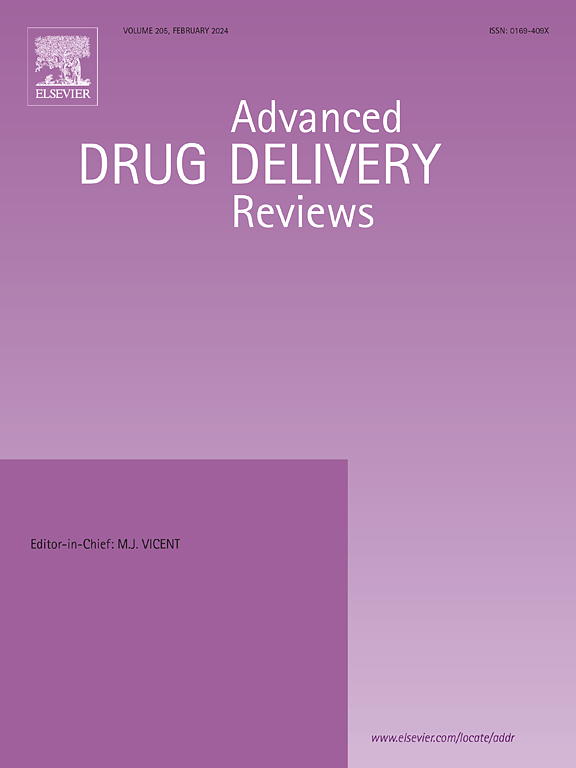Size-dependent penetration depth of colloidal nanoparticles into cell spheroids
IF 17.6
1区 医学
Q1 PHARMACOLOGY & PHARMACY
引用次数: 0
Abstract
The penetration of nanoparticle (NP)-based drugs into tissue is essential for their use as nanomedicines. Systematic studies about how different NP properties, such as size, influence NP penetration are helpful for the development of NP-based drugs. An overview of how NPs of different sizes may penetrate three-dimensional cell spheroids is given. In particular different techniques for experimental analysis are compared, including mass spectrometry, flow cytometry, optical fluorescence microscopy, X-ray fluorescence microscopy, and transmission electron microscopy. An experimental data set is supplemented exclusively made for this review, in which the results of different techniques are visualized. Limitations of the analysis techniques for different types of NPs, including carbon-based materials, are discussed.


胶体纳米颗粒进入细胞球体的渗透深度与尺寸有关
基于纳米粒子(NP)的药物渗透到组织中是其作为纳米药物使用的必要条件。系统研究不同NP性质(如大小)对NP穿透性的影响,有助于开发基于NP的药物。概述了不同大小的NPs如何穿透三维细胞球体。特别地,比较了不同的实验分析技术,包括质谱法、流式细胞术、光学荧光显微镜、x射线荧光显微镜和透射电子显微镜。本综述补充了一个专门的实验数据集,其中显示了不同技术的结果。讨论了不同类型NPs(包括碳基材料)分析技术的局限性。
本文章由计算机程序翻译,如有差异,请以英文原文为准。
求助全文
约1分钟内获得全文
求助全文
来源期刊
CiteScore
28.10
自引率
5.00%
发文量
294
审稿时长
15.1 weeks
期刊介绍:
The aim of the Journal is to provide a forum for the critical analysis of advanced drug and gene delivery systems and their applications in human and veterinary medicine. The Journal has a broad scope, covering the key issues for effective drug and gene delivery, from administration to site-specific delivery.
In general, the Journal publishes review articles in a Theme Issue format. Each Theme Issue provides a comprehensive and critical examination of current and emerging research on the design and development of advanced drug and gene delivery systems and their application to experimental and clinical therapeutics. The goal is to illustrate the pivotal role of a multidisciplinary approach to modern drug delivery, encompassing the application of sound biological and physicochemical principles to the engineering of drug delivery systems to meet the therapeutic need at hand. Importantly the Editorial Team of ADDR asks that the authors effectively window the extensive volume of literature, pick the important contributions and explain their importance, produce a forward looking identification of the challenges facing the field and produce a Conclusions section with expert recommendations to address the issues.

 求助内容:
求助内容: 应助结果提醒方式:
应助结果提醒方式:


